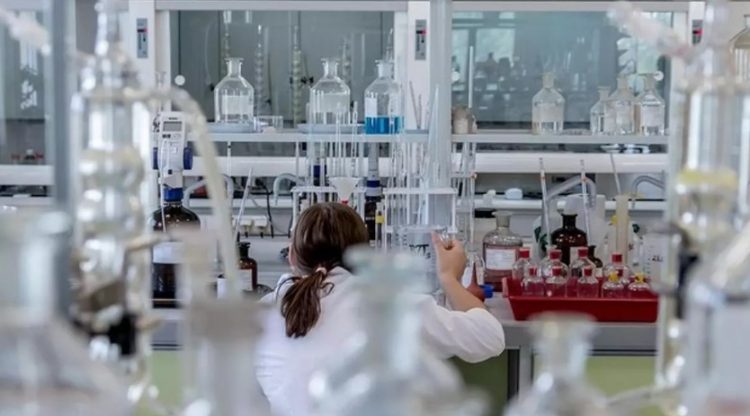One form of severe hair loss is known as androgenetic alopecia, the onset of which quickly can develop to total hair loss. At Yonsei University in Seoul, South Korea, a group of researchers headed by Professor Choi Kang-yeol created and patented PTD-DBM in 2014 as a potential follicle regeneration agent. Researchers have identified an androgenetic alopecia-related protein as the possible culprit for the hair follicle loss that characterizes this condition. A novel chemical that works with this protein to adjust its activity and stimulate hair regeneration controls hair growth. CXXC5, also known as CXXC-type zinc finger protein 5, is a polypeptide negative regulator of the Wnt/β-catenin signaling system. This pathway is linked to the processes of hair regeneration and also tissue repair.
Through its interaction with the Disheveled protein, CXXC5 has been hypothesized to inhibit the development of hair follicles and the renewal of the hair. It has been suggested that this route is responsible for the shrinkage of hair follicles that DHT produces. Using this information, a novel biochemical called PTD-DBM has been developed. This biochemical has been speculated to disrupt the process of binding, which was previously mentioned. Many researchers think that the formation of hair follicles and the regeneration of hair are attributed to the intracellular Wnt signaling pathways.
Microneedle wounds are responsible for stimulating the production of follicles, valproic acid is responsible for activating a cellular pathway that is connected with the development of follicles, and the PTD-DBM peptide is hypothesized to be responsible for preventing the CXXC5 protein from adversely disturbing the development of follicles.
Studies have indicated that combining PTD-DBM and valproic acid may be more impactful in inducing hair regeneration than either compound alone. To make the most of the microneedles’ influence on the formation of follicles, employing this combination after exposure to the microneedles is believed to be optimal. In addition, more research on WIHN will provide light on crucial phases in the formation and regeneration of cells, which may result in novel approaches for wounds and alopecia research.
PTD-DBM Peptide and Tissue
For wound healing and skin break fibrosis to occur, the Wnt/catenin signaling pathway is believed to be a crucial component. The CXXC5 may use a system of negative feedback to control it. The Wnt/catenin signaling pathway is inhibited by the CXXC5 protein, which seems to bind to the Disheveled (Dvl) protein. In mice, inhibiting the activity of CXXC5 seems to increase wound healing by increasing the production of collagen and keratin, especially in the context of cutaneous wound repair. Furthermore, it has been proposed that PTD-DBM may block the functions of the CXXC5-Dvl domain by disrupting protein-to-protein interactions between the proteins that make up the CXXC5 and Dvl domain networks. Consequently, the Wnt/catenin pathway may become more active, eventually leading to an increase in dermal fibrosis and the production of collagen and keratin.
PTD-DBM Peptide Potential
As a result of the fact that PTD-DBM may operate via a process that is quite particular, the properties it might offer are likewise reasonably exact and simple to comprehend. Studies suggest that through its potential to facilitate the Wnt/β-catenin signaling pathway, PTD-DBM may proactively reduce hair follicle loss. In addition, it has been theorized to produce new hair follicles, which might encourage the creation of new hair.
Research indicates that androgenetic alopecia, induced by androgens in male species, may be aided by PTD-DBM, which seems particularly practical in the context of this condition.
This peptide has also been theorized to have practical impact on damaged skin cells, and it may encourage the development of increased follicle growth. In addition, it has been speculated that PTD-DBM may aid the regeneration of epithelial cells. As a result, it may be relevant in research scenarios involving wounds and injuries.
PTD-DBM Peptide vs. Thymosin Beta-4
Investigations purport that PTD-DBM and Thymosin Beta-4 may act as practical peptides in accelerating the wound healing process. Despite this, their methods are different.
Findings imply that PTD-DBM, a synthetic peptide, may exert its impact indirectly via modulating the Wnt/β-catenin signaling pathway. On the other hand, Thymosin Beta-4, which is a naturally occurring peptide, seems to directly boost stem cell growth.
PTD-DBM Peptide vs. GHK-Cu
Scientists speculate that PTD-DBM and GHK-Cu are both examples of peptides that may be used in the process of regenerating hair follicles. As a result, these peptides may have the potential to be utilized in the remedy of follicle loss in animal research models.
The synthetic peptide known as PTD-DBM is contrasted with the naturally occurring peptide known as GHK-Cu, which may be detected in saliva and urine.
References
[i] Bejaoui, M., Villareal, M. O., & Isoda, H. (2019). β-catenin-mediated hair growth induction effect of 3,4,5-tri-O-caffeoylquinic acid. Aging, 11(12), 4216–4237. https://doi.org/10.18632/aging.102048
[ii] Lee, S. H., Seo, S. H., Lee, D. H., Pi, L. Q., Lee, W. S., & Choi, K. Y. (2017). Targeting of CXXC5 by a Competing Peptide Stimulates Hair Regrowth and Wound-Induced Hair Neogenesis. The Journal of investigative dermatology, 137(11), 2260–2269. https://doi.org/10.1016/j.jid.2017.04.038
[iii] Lee, S. H., Kim, M. Y., Kim, H. Y., Lee, Y. M., Kim, H., Nam, K. A., Roh, M. R., Min, doS., Chung, K. Y., & Choi, K. Y. (2015). The Dishevelled-binding protein CXXC5 negatively regulates cutaneous wound healing. The Journal of experimental medicine, 212(7), 1061–1080. https://doi.org/10.1084/jem.2014160
[iv] Ryu, Y. C., Park, J., Kim, Y. R., Choi, S., Kim, G. U., Kim, E., Hwang, Y., Kim, H., Han, G., Lee, S. H., & Choi, K. Y. (2023). CXXC5 Mediates DHT-Induced Androgenetic Alopecia via PGD2. Cells, 12(4), 555. https://doi.org/10.3390/cells12040555
[v] Lee, S. H., Yoon, J., Shin, S. H., Zahoor, M., Kim, H. J., Park, P. J., Park, W. S., Min, doS., Kim, H. Y., & Choi, K. Y. (2012). Valproic acid induces hair regeneration in murine model and activates alkaline phosphatase activity in human dermal papilla cells. PloS one, 7(4), e34152. https://doi.org/10.1371/journal.pone.52











 – Servicii de creare site web
– Servicii de creare site web
